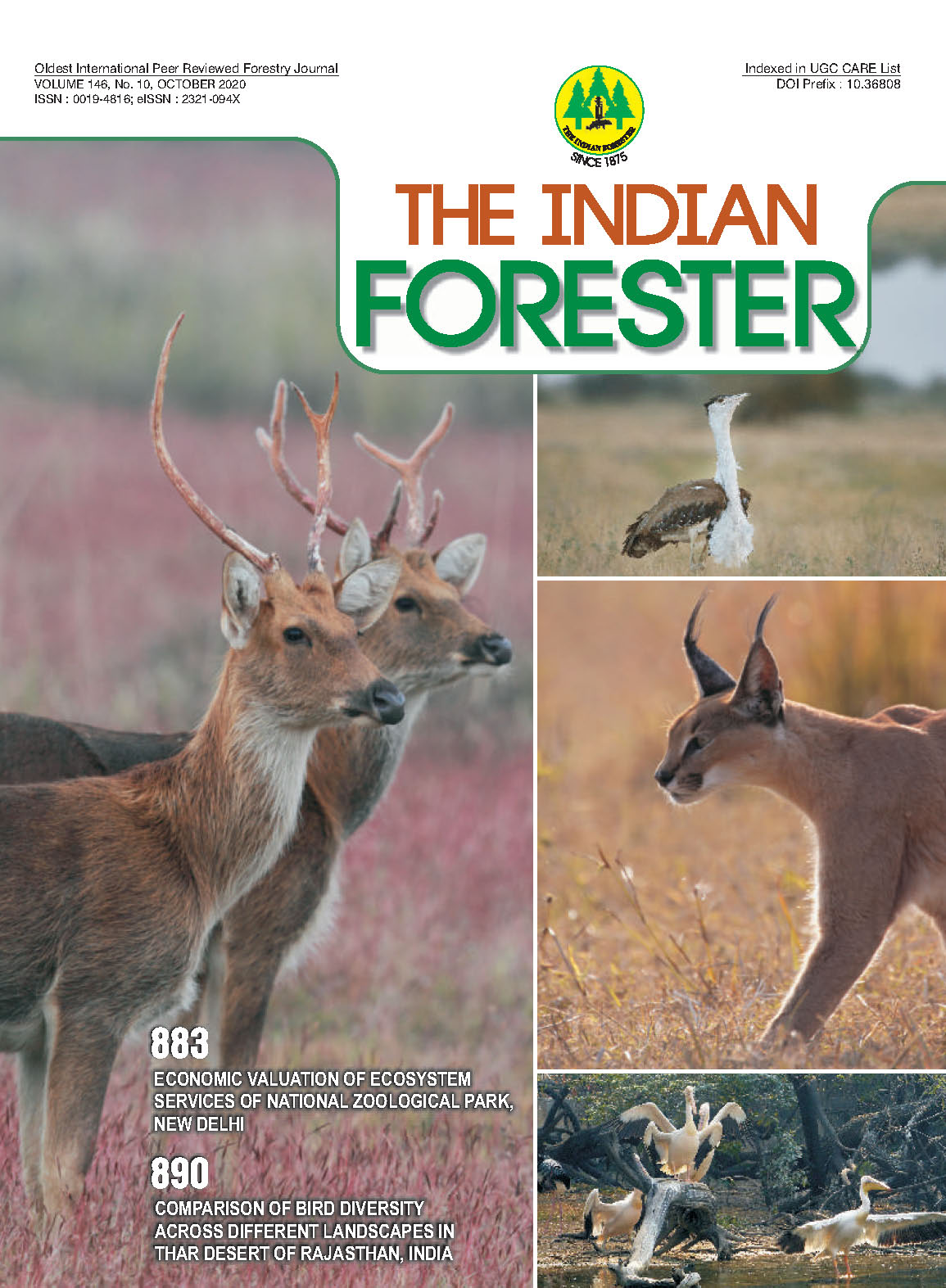Seasonal Assessment of Aquatic Avifauna of Nal Sarovar Sanctuary, Gujarat, India
DOI:
https://doi.org/10.36808/if/2020/v146i10/155429Keywords:
Avifauna, Nal Sarovar, Seasonal variation, Waterbirds, Wetland.Abstract
A study was conducted by Gujarat Ecological Education and Research (GEER) Foundation on waterbirds of Nai Sarovar Sanctuary during the years 2016-18 covering all the majorseasons. A total of 85 waterbird species were recorded that belonged to 18 families. Among all the families, maximum number of species (14 species, i.e.16% of all the waterbird species) were represented by Anatidae family[i.e., the family of ducks, geese and swans] followed by those of Scoiopacidae family [i.e., the family ofsandpipers, shanks, snipes, stints, curlews etc.; (12 species, 14%)]. The study has also indicated that the Sanctuary supported maximum number ofspecies ofwaterbird during winterseason (84 species), whereas minimum number of waterbird species were recorded in summer (50 species). The study has indicated that Nal Sarovar has highest utility as waterbird habitat during winter season therefore maximum management practices should be focused during this period.References
Acharya H.G. (1965). A note on the Nal, Prakriti. Journal of GujaratNaturalHistorySociety, 12(3&4): 1-16.
Ali S. (2002). The book of Indian birds. Bombay Natural History Society. Oxford University Press. Mumbai, India, pp. 1-326.
Bibby C., Jones M. and Marsden S. (2000). Expedition field techniques-bird surveys, Birdlife International, Cambridge, UK. pp. 137.
GEER (1998). Environmental Impact Assessment of Sardar Sarovar Project on Nal sarovar Bird Sanctuary (Technical Report). Gujarat Ecological Education and Research (GEER) Foundation, Gandhinagar. 138p.
Grimmett R., Inskipp C. and Inskipp T. (2011). Birds of the Indian Subcontinent. Edn 2, Oxford University Press. Delhi, India, pp. 1-480. ISBN: 978-06-91153-490.
Ismail A., Rahman F. and Zulkifli S.Z. (2012). Composition and diversity of avifauna in the artificial Putrajaya wetlands and comparison with its two neighboring habitats, Tropical Natural. History, 12(2): 137-145.
JohriA., Ramani K.R., SutharD.C. and Patel G.A. (1990). Management plan for Nal Sarovar Bird Sanctuary, 19902000, Gujarat State Forest Department. Gandhinagar.
Patrick D.(1990). Wetland conservation. A review of current issues and required action: IUCN, Gland, Switzerland, (1990) pp 1-96. ISBN: 2-83-1-0015-9.
Tatu K. (2012). Wetland and waterbird heritage of Gujarat-An illustrated directory, Gujarat State Forest Department, Govt, of Gujarat, pp. 1-690.
Tatu K. and Kamboj R.D. (2016). Nal SarovarLake-A Incredible Rendezvous point of Wetland Denizens of Gujarat, Gujarat Ecological Education and Research (GEER) Foundation, Gandhinagar.
Vijayan V.S. (2011) Inland wetlands of India: conservation priorities, Salim Ali Centre for Ornithology and Natural History, Coimbatore, pp. 1-532, ISBN: 8190213601.
Downloads
Downloads
Published
How to Cite
Issue
Section
License
Unless otherwise stated, copyright or similar rights in all materials presented on the site, including graphical images, are owned by Indian Forester.





